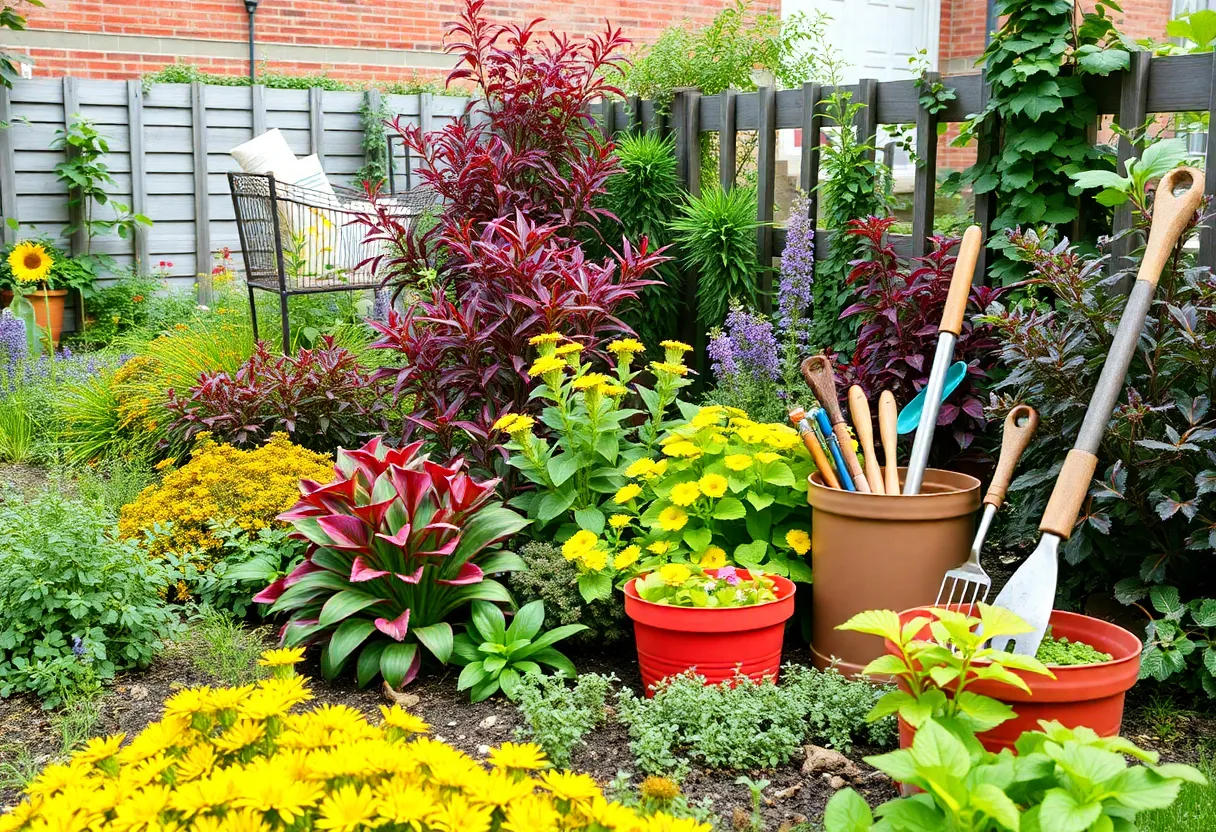How to Prepare Your Philadelphia Garden for the Changing Seasons
Adapting your garden practices to changing seasons is essential for maintaining plant health, productivity, and aesthetic appeal. Philadelphia’s climate, characterized by hot summers and cold winters, requires strategic planning to optimize gardening year-round. Proper preparation ensures longevity, vitality, and maximizing yields or enjoyment from your garden. This comprehensive guide details the essential steps for each season, focusing on soil health, planting techniques, pest control, and preservation strategies tailored to Philadelphia’s environment.
Spring Preparation
Spring marks a time of renewal. The foundation laid during this period influences the entire growing season. Efficient spring preparation involves soil tuning, strategic planting, seed starting, and ongoing maintenance.
Soil Preparation
- Test Soil pH: Conduct a soil pH test to determine your garden’s acidity or alkalinity. Target a pH between 6.0 and 7.0, depending on plant requirements. Accurate pH levels optimize nutrient availability and plant health.
- Amend Soil: Adjust soil pH by adding lime for acidity or sulfur/aluminum sulfate for alkalinity, based on test results. Incorporate organic matter such as compost, aged manure, or peat moss to improve fertility, drainage, and microbial activity.
Planting Schedule
- Cool-Season Crops: Plant peas, fava beans, onions, leeks, garlic, and greens (spinach, lettuce, kale) early when soil warms slightly. These crops tolerate lower temperatures and can be harvested before summer heat peaks.
- Warm-Season Crops: Once the risk of frost diminishes—typically late April to early May—introduce tomatoes, peppers, and beans. Use frost protection like row covers if necessary.
Seed Starting
- Indoors: Start tomato and pepper seeds indoors 6–8 weeks prior to the last expected frost date. Use grow lights and controlled environments for optimal growth.
- Outdoors: Direct sow carrots, radishes, and beans into prepared garden beds once soil temperature exceeds approximately 50°F. Ensure soil drainage and consistency for germination.
Garden Maintenance
- Weeding: Regularly remove weeds to reduce competition for nutrients and water, preventing them from setting seed and spreading.
- Mulching: Apply 1–2 inch organic mulch—such as shredded leaves, straw, or bark chips—around plants to conserve moisture, suppress weeds, and stabilize soil temperature.
Summer Care
Summer emphasizes sustaining healthy plant growth amid high temperatures and managing pests. Active watering, disease control, and harvest strategies are critical.
Watering Practices
- Deep Watering: Water deeply at the base of plants, encouraging deep roots. Use soaker hoses or drip irrigation for efficiency and minimal evaporation.
- Morning Watering: Water early in the day to reduce evaporation and allow foliage to dry, minimizing fungal diseases.
Pest and Disease Management
- Regular Monitoring: Frequently inspect plants for signs of pests like aphids, beetles, or caterpillars, as well as diseases such as blights or mildews.
- Integrated Pest Management (IPM): Use biological controls (beneficial insects), cultural practices, physical barriers, and targeted chemical treatments to control pests sustainably.
Pruning and Deadheading
- Pruning: Remove dead, diseased, or overcrowded branches to promote airflow and energy efficiency.
- Deadheading: Regularly remove spent flowers from ornamental plants to stimulate repeat blooming and maintain aesthetic appeal.
Harvesting
- Timely Harvest: Pick vegetables and fruits at peak maturity to maximize flavor, nutrition, and storage life.
- Preservation: Process surplus produce through freezing, canning, drying, or fermenting to extend usability beyond the growing season.
Fall Transition
Fall is ideal for extending your garden’s productivity and preparing for winter. Focus shifts to planting hardy crops, cleaning up, and improving soil health.
Fall Planting
- Cool-Season Crops: Sow kale, spinach, radishes, carrots, and Brussels sprouts. These crops can be harvested into winter, especially if protected with row covers or cold frames.
- Perennials: Fall planting of perennials (such as roses, native grasses, or herbs) allows roots to establish before winter dormancy, leading to vigorous growth in spring.
Garden Cleanup
- Remove Debris: Clear dead plants, fallen leaves, and plant debris to minimize overwintering pests and disease spores.
- Composting: Compost organic waste; turn regularly and maintain proper moisture levels to create rich compost for spring use.
Soil Amendment
- Add Organic Matter: Mix compost or well-aged manure into beds to enhance soil fertility and structure, setting a foundation for the next growing season.
- Cover Crops: Plant cover crops such as clover, rye, or vetch to protect soil, suppress weeds, and naturally add nitrogen.
Mulching
- Insulation: Apply organic mulches around perennials and exposed roots to safeguard against freezing temperatures.
- Materials: Use shredded leaves, straw, or bark chips for effective insulation and soil protection.
Winter Preparation
In winter, maintenance and planning are paramount with minimal active gardening.
Tool Maintenance
- Cleaning: Use steel wool or wire brushes to remove rust from tools; sharpen blades where necessary.
- Storage: Store tools in dry, secure locations to prevent rust and deterioration, ensuring readiness for spring.
Planning for Next Season
- Garden Journal: Document successes and failures, noting planting dates, weather events, and pest issues to inform future planning.
- Seed Catalogs: Review or acquire seed catalogs, review varieties, and plan your seed starting timetable.
Wildlife Support
- Bird Feeders: Maintain feeders and water sources, providing sustenance for overwintering birds.
- Habitat Creation: Leave some areas undisturbed with leaf litter or natural cover to shelter beneficial insects and small wildlife.
Additional Tips for Year-Round Success
- Microclimates: Utilize warm microclimates such as sunny south-facing walls to extend the growing season for tender plants.
- Season Extension: Employ cold frames, hoop houses, or row covers to protect crops from early frosts and prolong harvest periods.
- Community Resources: Engage with local gardening groups or extension programs for tailored, region-specific advice and support.
Through diligent planning, soil management, and seasonal adjustments, your Philadelphia garden can remain productive and vibrant throughout the year. Properly preparing for each season enhances plant health, yields, and garden aesthetics, ensuring a thriving garden regardless of outdoor conditions.
Frequently Asked Questions
When is the best time to start planting in Philadelphia?
The optimal planting time depends on the crop. For cool-season crops, early spring is ideal, around March to April. Warm-season crops should be planted after the last frost, typically late April or early May. Starting seeds indoors 6–8 weeks before the last frost provides a head start.
How can I extend my growing season in Philadelphia?
Use season-extending techniques such as cold frames, row covers, or hoop houses. These protect plants from early frosts and cold winds, allowing for earlier planting and extended harvest periods into late fall or early winter.
What are effective ways to manage pests naturally?
Practice integrated pest management by encouraging beneficial insects, using neem oil or insecticidal soaps, crop rotation, and physical barriers like row covers. Proper plant spacing and sanitation also reduce pest habitat.
How do I prepare my soil for planting?
Test soil pH and amend as necessary. Incorporate organic matter such as compost or manure to improve fertility, drainage, and microbial activity. Ensure proper drainage and soil structure based on your plant needs.
Key Features of Seasonal Garden Preparation
| Aspect | Spring | Summer | Fall | Winter |
|---|---|---|---|---|
| Soil Management | Test, amend, incorporate organic matter | Maintain fertility, manage watering | Add organic matter, plant cover crops | Maintain soil health, prepare for spring |
| Planting | Cool-season, start seedlings indoors | Main crop growth, pest management | Cool-season crops, perennials | Plan, review seed catalogs, assign targets |
| Maintenance | Weeding, mulching, early fertilization | Watering, pruning, pest control | Cleanup, composting, plant protection | Tool maintenance, planning, wildlife habitat |
| Protection | Frost protection for tender plants | Water in mornings, pest control | Mulching roots, insulate perennials | Cover plants with frost protection if needed |
Author: STAFF HERE PHILADELPHIA WRITER
The PHILADELPHIA STAFF WRITER represents the experienced team at HEREPhiladelphia.com, your go-to source for actionable local news and information in Philadelphia, Philadelphia County, and beyond. Specializing in "news you can use," we cover essential topics like product reviews for personal and business needs, local business directories, politics, real estate trends, neighborhood insights, and state news affecting the area—with deep expertise drawn from years of dedicated reporting and strong community input, including local press releases and business updates. We deliver top reporting on high-value events such as Mummers Parade, Philadelphia Flower Show, and Thanksgiving Day Parade. Our coverage extends to key organizations like the Greater Philadelphia Chamber of Commerce and United Way of Greater Philadelphia, plus leading businesses in telecommunications, food services, and healthcare that power the local economy such as Comcast, Aramark, and Children's Hospital of Philadelphia. As part of the broader HERE network, we provide comprehensive, credible insights into Pennsylvania's dynamic landscape.





